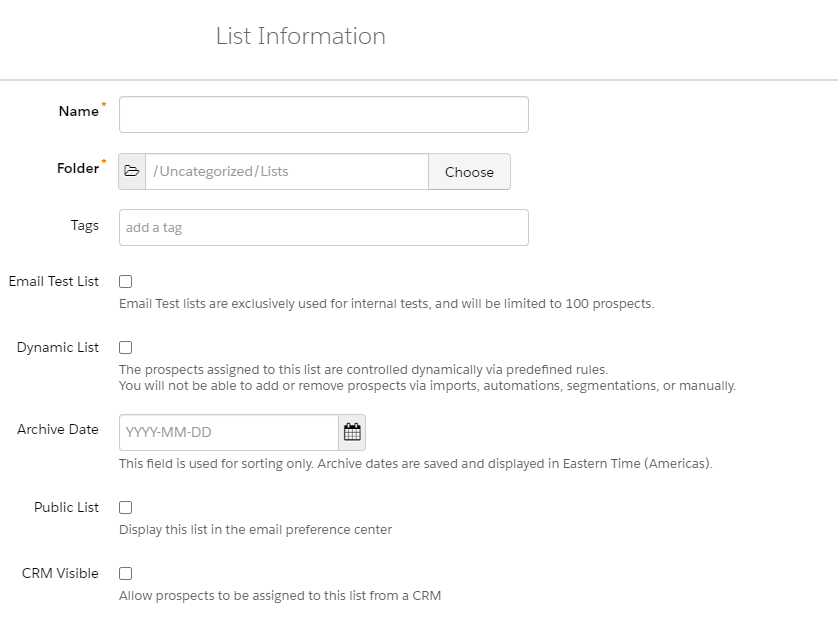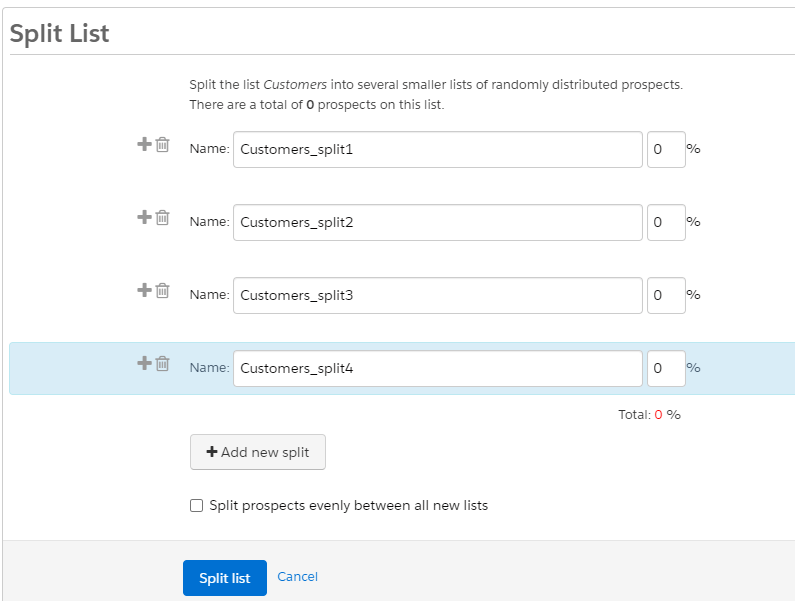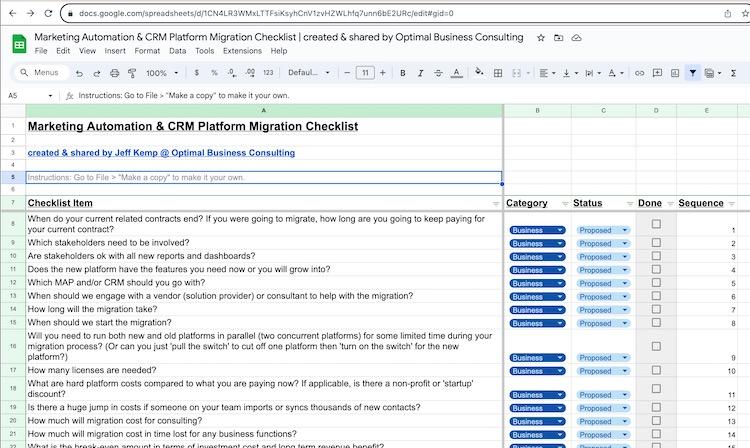One of the first items of business when setting up your Marketing Cloud Account Engagement (Pardot) account is to organize your prospects in various lists. Pardot keeps it fairly simple and straightforward with three types of lists: dynamic, static and test lists. To create a list in Pardot Lightning, go to Prospects on the top menu and then to Segmentation on the lefthand menu. To determine which type of list you might wish to create, let’s go over the characteristics of each list type, starting with the list you’re likely to use the most: static lists.

Static lists
Creating a static list in Pardot is easy. You’ll go to Prospects>Segmentation>Segmentation Lists and create a new list. List name and location are mandatory fields for all list types. We also recommend establishing a tag naming convention that will be used consistently by all Pardot users. This will help to you quickly locate these lists and to run reports on this list in the future. You will not tick email test list or dynamic list.
Public list—if you tick this box, this list will be visible in prospects’ email preference center. Ticking this box is recommending for all communications that people can opt in and out of, such as newsletters.
CRM visible—if you tick this box, this list will be visible on the lead and/or contact profile in Salesforce. This is a handy feature if most of your team primarily uses Salesforce. They don’t need to go into Pardot to see if a contact or lead is part of this mailing list.

If you want to add prospects to a list once they’ve completed a form, you’ll create a static list for this. When creating the form, you’ll add a completion action of ‘add to list’. You can use static lists as suppression lists and in Engagement Programs as well. Static lists can also be split into other lists. The default is 50/50 but you can change this to anything that equals 100%. You can also split a list into more than two lists. Static lists cannot be converted into dynamic lists.

Test lists
Tests lists serve a specific purpose—they are for testing emails. If you want to test out a new template or Engagement Studio, you can use the test list for this. Test lists can also be CRM visible but they cannot be public lists, since you would not want contacts and leads to be able to subscribe to an internal test list. If a recipient clicks on the Email Preference Center or the Unsubscribe links, they will not be removed from the test list but they will be taken to the respective landing page so that they can test that the link works.
Note: Test lists can have up to 100 prospects. Completion actions do not fire on emails sent to test lists.
Dynamic lists
Dynamic lists are rule based. They automatically add or remove prospects when they match, or unmatch, criteria. Dynamic lists are the ideal choice for lists that change frequently, such as clients, employees and subscribers. They are also a desirable choice for Engagement Programs.
Because dynamic lists are based entirely on rules, prospects cannot be manually added or removed. Because prospects cannot manually be added or removed dynamic lists cannot be public, nor can they be CRM visible. Dynamic lists can be split but the newly created sub-lists will be static lists.

Dynamic lists are not CRM visible and cannot be split into subsequent dynamic lists. Test lists are normally comprised of internal users and are used for testing emails and Engagement Programs.
Summary
Dynamic, static and test lists are the three main list types in Pardot. Static lists are used when criteria don’t change frequently or when prospects need to be able to opt in or out. Dynamic lists are populated entirely by rules; prospects cannot be added or removed manually.
References
https://help.salesforce.com/s/articleView?id=sf.pardot_email_test_lists.htm&type=5
https://help.salesforce.com/s/articleView?id=sf.pardot_email_testing_tab.htm&type=5
https://help.salesforce.com/s/articleView?id=sf.pardot_segmentation_create_a_list.htm&type=5
https://help.salesforce.com/s/articleView?id=sf.pardot_segmentation_create_dynamic_list.htm&type=5
About the Pardot rename
In April 2022, Salesforce announced the rebrand of Pardot to Marketing Cloud Account Engagement. While the rebrand unfolds and the world adapts to the new nomenclature, we'll typically keep the Pardot name in our blog posts.
There are several permutations of the new name being thrown about, so you may see us use any one of them as things evolve:
- Pardot
- Marketing Cloud Account Engagement
- Marketing Cloud Account Engagement (Pardot)
- MCAE
- MC Account Engagement
- Account Engagement by Pardot






















0 Comments